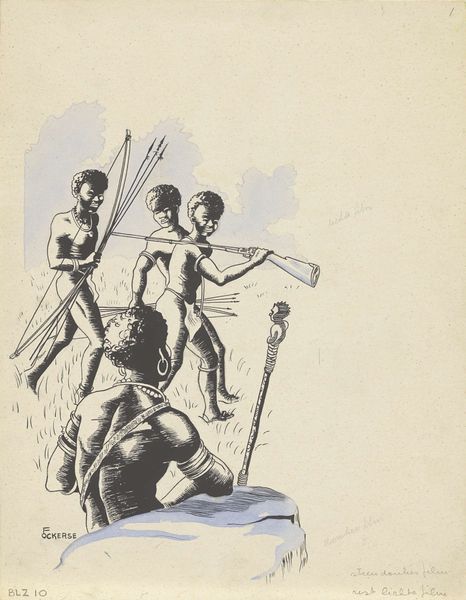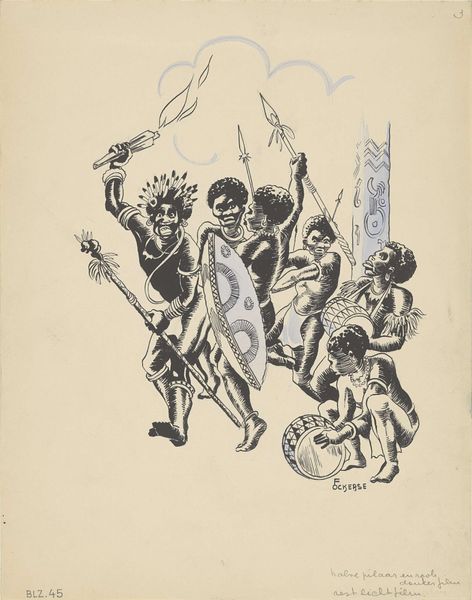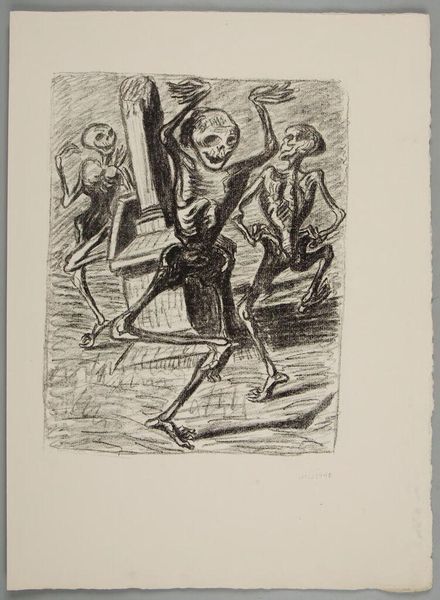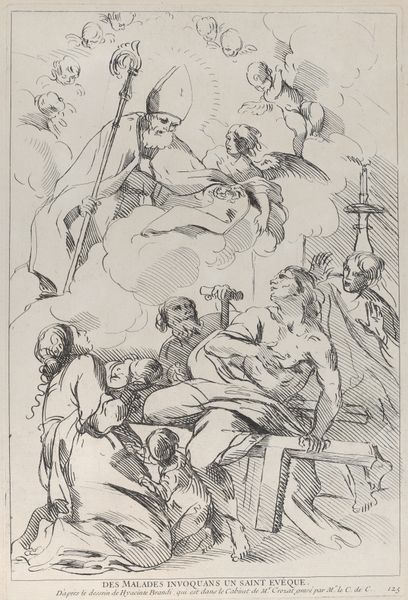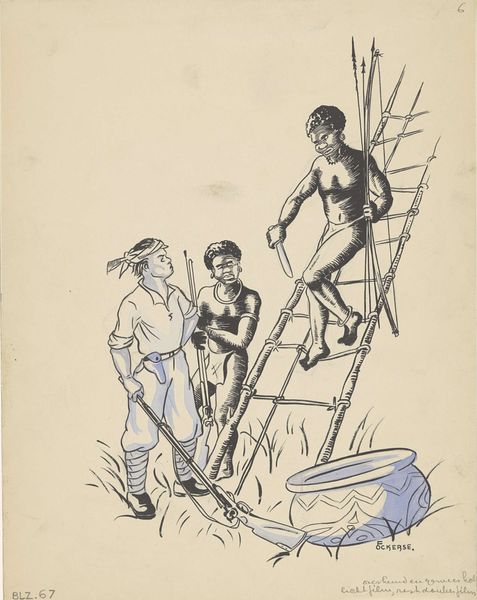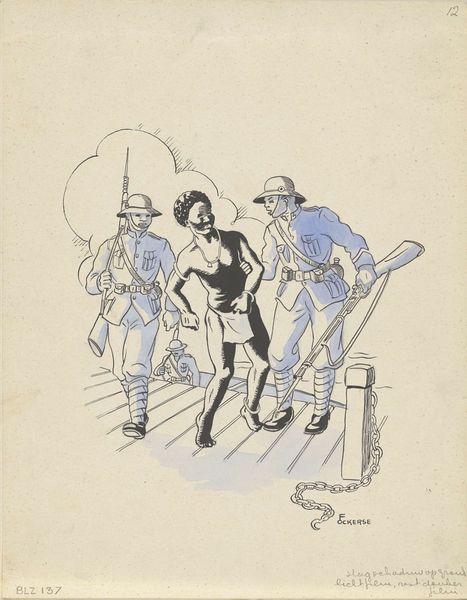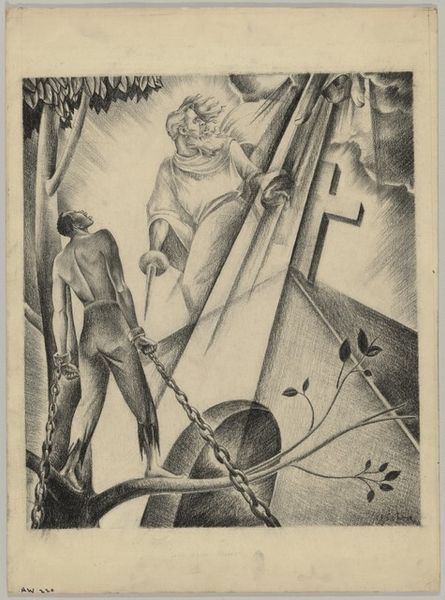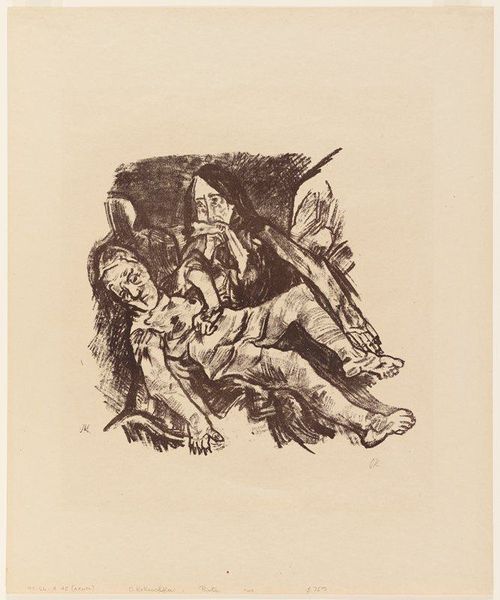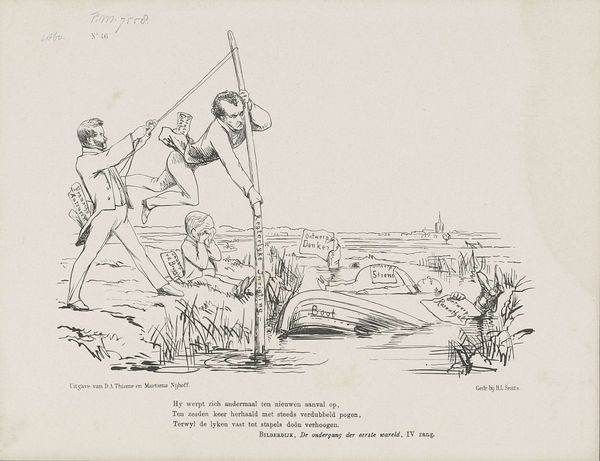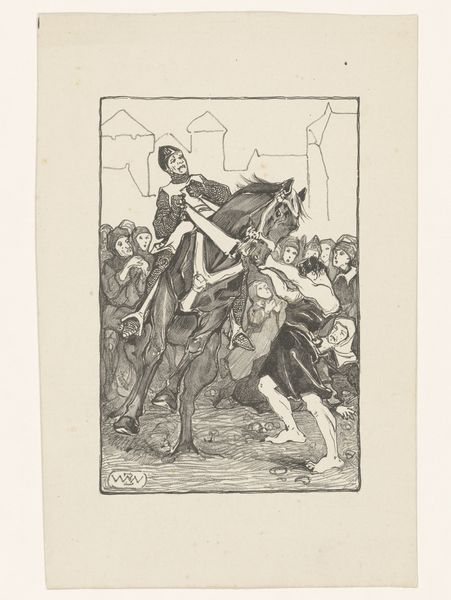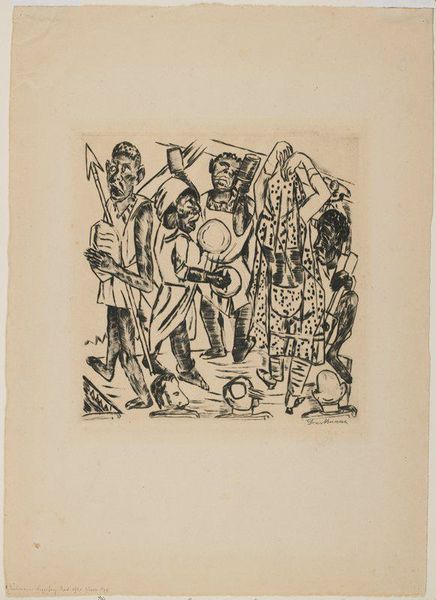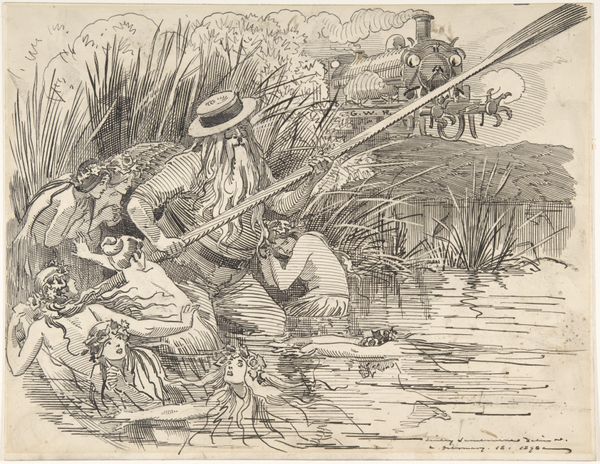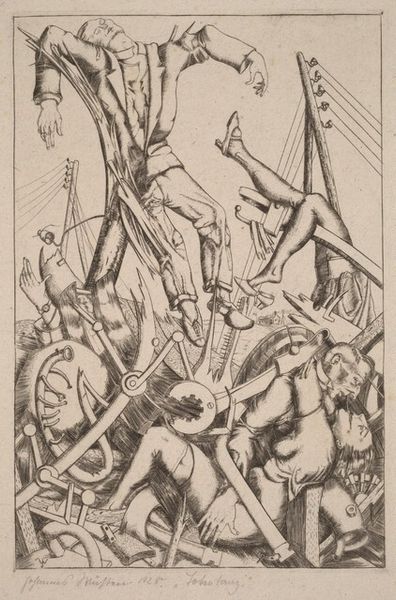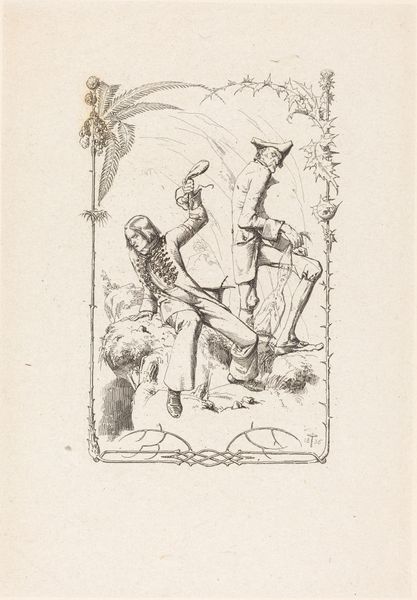
drawing, ink, pen
#
drawing
#
imaginative character sketch
#
quirky sketch
#
narrative-art
#
cartoon sketch
#
figuration
#
personal sketchbook
#
ink
#
idea generation sketch
#
sketchwork
#
ink drawing experimentation
#
pen-ink sketch
#
orientalism
#
sketchbook drawing
#
pen
#
sketchbook art
Dimensions: height 275 mm, width 216 mm
Copyright: Rijks Museum: Open Domain
Curator: This ink drawing by F. Ockerse, titled "Witte man met vuurwapen tussen de Nieuw-Guineeërs," translates to "White man with a firearm among the New Guineans." It dates from before 1936. What strikes you first? Editor: The immediate tension! The contrast in skin tones, the weaponry juxtaposed with bare chests carrying crates… it feels volatile, unsettling. The boxes being transported seem important; are they being carried of their own volition? What's in them? Curator: Indeed. We can delve into that colonial power dynamic. The drawing uses an orientalist style and we can examine it as a reflection of its time, when Dutch colonial narratives often portrayed such encounters through a specific lens that enforced notions of racial and cultural hierarchies. The white man's firearm becomes a potent symbol. Editor: Absolutely. The labor, the means of production. We see these indigenous individuals burdened, almost literally and figuratively, by the white man's "progress" – signified by those boxed goods. How were these boxes made? Who benefits from the distribution and transport? It speaks volumes about exploitation and resource extraction. Curator: Precisely. And what about the construction of the indigenous figures themselves? How does the artist choose to represent them physically and emotionally, and what ideological work does that visual language perform? Their bareness versus the clothed and armed figure, these were conscious choices embedded with complex social and political meanings. Editor: It makes you consider the paper, the ink – were these materials readily accessible to the indigenous population at that time? The very creation of the image, from start to finish, signifies inequitable accessibility and agency. Curator: By reading against the grain of this drawing, interrogating not just what's depicted, but also how and why, we expose a deeply problematic narrative inherent in colonial art. The act of sketching, itself, becomes a tool of power and classification. Editor: A stark reminder that even seemingly simple sketches carry immense historical and political weight when you really analyze its raw ingredients and labor implications.
Comments
No comments
Be the first to comment and join the conversation on the ultimate creative platform.
